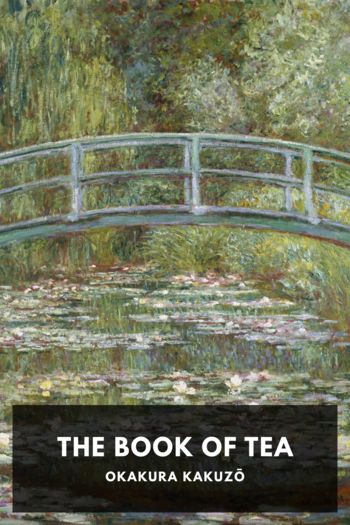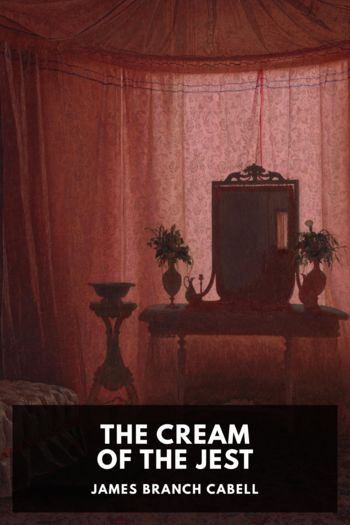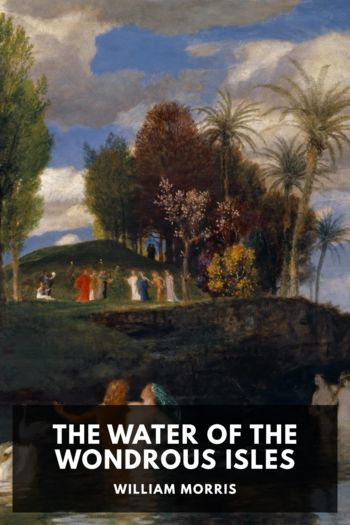Chocolate Sarah Moss (best fantasy books to read .txt) 📖

- Author: Sarah Moss
Book online «Chocolate Sarah Moss (best fantasy books to read .txt) 📖». Author Sarah Moss
Mayan cacao god.
Many of these vases have been found in graves, and there is usually evidence that they were left full of the prepared drink. The hieroglyphs on these ceramics dedicate the vessel to a god or patron, describe its shape, list the contents and end with a personal name, suggesting that the vases were commissioned by wealthy individuals in readiness for their own burials. Despite its high value, and possible use as a form of currency, cacao was not passed down families and therefore accompanied its owner on the final journey. The hieroglyphics suggest that cacao was involved in rituals for other rites of passage as well as burial, including weddings, anniversaries and celebratory or commemorative banquets. It is easy to see how casual ideas about Mesoamerican history might claim therefore that chocolate was a magic or sacred substance, but we might first reflect on the role of alcohol in our own society: it is not magic, but widely regarded as pleasant and important in marking festivals and social events from ‘stag parties’ to Holy Communion.
Chocolate took on another function in Mesoamerica. It is often said that the Maya, and later the Aztecs, used cocoa beans as money, as a substitute for gold, and this analogy is presented as an antecedent to our own sense of chocolate’spowers. The discovery of fake cocoa beans from Balberta in the first centuries BCE suggests a habit of counterfeiting which would only make sense if the beans were being exchanged for something of value (there is no point in counterfeiting something you are planning to cook), and certainly by the time the Spanish arrived at the Aztec court in 15 21, cocoa beans were a recognized way of storing capital. But these events are separated by 1500 years, the distance between now and the decline of the Roman empire, and the meaning and function of the cocoa bean in Mesoamerica cannot have been stable or even consistent across those centuries. Cocoa beans and chocolate lent themselves to exchange because they were grown and produced in specific areas but consumed across the continent and were easily preserved and transported by cargo canoes and in tumplines, backpacks secured by a strap across the forehead. As the Aztec empire, based in what is now Mexico, drew strength after the final throes of the ‘Terminal Classic’ era of the Maya and the fall of the Toltec people who succeeded them, taxes and tributes were levied in the form of cacao. The Aztec infrastructure was rooted in networks for the passage and exchange of goods, and chocolate was the most portable and widely valued commodity of Mesoamerica.
No-one is sure where the Aztec, or Mexica, people came from, but between the late fourteenth and late fifteenth centuries they established an empire based in Tenochtitlan, the site of the present-day Mexico City. The city throve on tributes exacted from subjugated provinces, and became the powerhouse of a complex and widely misunderstood culture. Later Aztec rulers presided over courts whose hierarchies and etiquettes perhaps find a European equivalent in those of mid-eighteenth-century Versailles.1 The Aztecs practised a polytheistic religion which was the basis for an advancedtheology, and most of what we know and understand about these disciplines is based on, and thus inevitably shaped by, the accounts of the Spanish conquistadors and their henchmen. Some, especially the Franciscan missionaries of the mid-sixteenth century, learnt Nahuatl and devoted their lives to the study of Aztec culture, but even the most careful records by foreign ethnographers cannot be said, six hundred years later, to give any account of Aztec life that a citizen of pre-Conquest Tenochtitlan might have endorsed. What follows here is an account of the beginnings of European mythmaking about both chocolate and the cultures which originated it.
Ancient Mexican drinking cups.
On 15 August 1502 Columbus had sent his men ashore at Guanaja, an island off modern Honduras, where theyhad arrived a few days earlier after a traumatic transatlantic passage. The original eyewitness accounts are lost, but Bartolomé de las Casas, working from these lost accounts, writes that, ‘as soon as the Governor had gone ashore at this island ... a canoe full of Indians arrived, as long as a galley and eight feet broad; it came loaded with goods from the west.’ These goods included, ‘wooden swords ... certain flint knives, small copper hatchets, and bells and some medals, crucibles to melt the copper; many cacao nuts which they use for money in New Spain, and in Yucatan, and in other parts.’ Since these travellers ‘did not dare defend themselves nor flee seeing the ships of the Christians’, they were taken to the Admiral, who offered gold in exchange for information about local resources. It is Columbus’s son Ferdinand who provides the often-quoted detail that this Maya trading canoe was stocked with ‘those almonds which in New Spain are used for money. They seemed to hold these almonds at great price; for when they were brought on board ship together with their goods, I observed that when any of these almonds fell, they all stooped to pick it up, as if an eye had fallen.’ This is where the equation between chocolate and gold enters the European imagination.
Both Ferdinand Columbus’s and Bartolomé de las Casas’s accounts of this encounter help to inaugurate the trope in which the ‘primitive’ people place exaggerated value on something which is, to the eyes of the ‘civilized’ observer, obviously ephemeral. The people who





Comments (0)